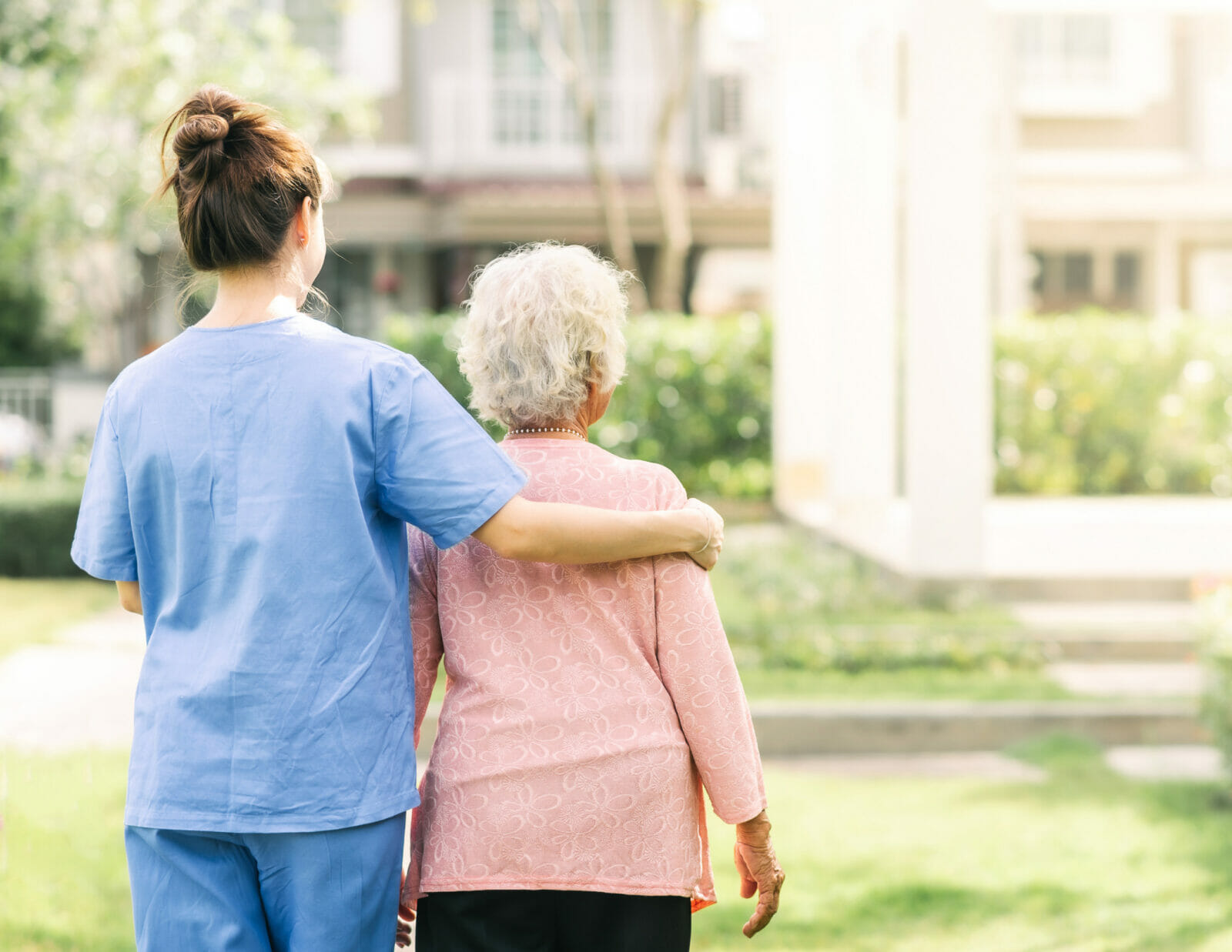As a caregiver for senior citizens, burnout is unfortunately a common occurrence. One study found that over 40% of caregivers experience symptoms of burnout (1). Caregiver burnout happens when a caregiver (typically of someone elderly, ill, or disabled) begins to feel physically, emotionally, and mentally exhausted from their caregiving duties. Financial concerns can also be an aspect of caregiver burnout. While there isn’t a universally agreed-upon categorization of caregiver burnout into distinct stages, there is a typical progression of symptoms that can occur. Read on to learn more about the 3 stages of caregiver burnout and how to find relief from these symptoms.
What is a Caregiver?
A caregiver is anyone who cares for another person. In this article, we are mainly focused on caregivers of older adults, but the symptoms of burnout are similar for all types of carers. Caregivers of senior citizens typically help with bathing, dressing, eating or preparing food, running errands, and any other needs a senior might have. This can include giving medication or injections on schedule, transportation, and household management tasks. Essentially, they take care of a senior’s needs in most or all aspects of their lives.
What are the Symptoms of Caregiver Burnout?
While burnout is not technically a recognized mental health condition, it is a phenomenon that is familiar to many people. You might be suffering from caregiver burnout if you are feeling some of these symptoms:
- Constant, unrelenting anxiety about the person you care for
- Depression
- Exhaustion
- Being easily irritated or angry
- Not being able to take care of yourself
- Feeling frustrated with life
- Feeling “stuck” or trapped in your responsibilities
- Not enjoying things you usually find fun
- Not wanting to leave your home or spend time with others
- Feeling overwhelmed most of the time
While everyone experiences these types of symptoms sometimes, if you’re experiencing a lot of them on a regular basis, you might be suffering from burnout. When these symptoms affect your life or the life of the person you care for, it’s time to start looking for relief.
What are the 3 Stages of Caregiver Burnout?
Stage One: Strain and Overload
In the first stage of caregiver burnout, you may experience increased stress and strain due to the demands of caregiving. You might feel overwhelmed, exhausted, and find it challenging to balance your caregiving responsibilities with other aspects of your life, such as work or personal relationships. Symptoms can include irritability, sleep disturbances, anxiety, and increased physical health issues.
Stage Two: Withdrawal and Isolation
As your burden as a caregiver persists, you may start to withdraw from social activities and isolate yourself from friends, family, and other support networks. You might feel a sense of guilt doing anything other than caregiving. You might also find yourself thinking that nobody else can adequately care for your client or loved one. Feelings of loneliness, depression, and a loss of personal identity can intensify during this stage.
Stage Three: Complete Exhaustion
In the final stage of caregiver burnout, caregivers might experience complete emotional, mental, and physical exhaustion. You may feel depleted on all levels and struggle to maintain your own well-being. Chronic fatigue, sleep disturbances, frequent illnesses, depression, and a sense of hopelessness are commonly observed symptoms. At this stage, you may also become emotionally detached from the person you are caring for due to sheer exhaustion. You may find yourself resenting your client or loved one and fantasizing about quitting or moving away.
It’s important to note that caregiver burnout is a complex and individual experience. This is meant as a general guide, and not all caregivers will progress through these stages in the same way or at the same pace.
How Can I Find Relief from Caregiver Burnout?
If you think you are suffering from burnout, you probably are. People in the earlier stages of burnout may avoid progressing into more severe symptoms by seeking help right away. Even if you consider yourself entirely burned out, it’s possible to recover from these feelings and enjoy caregiving again. Here are a few things to try.
Self-Care Strategies
Have you heard the saying, “you can’t pour from an empty cup?” Burned-out caregivers can feel like they’re pouring from an empty cup every day. While it’s possible to carry on like this for a while, eventually you will truly become too burned out to continue your responsibilities. It may help to begin some simple self-care strategies that “fill your cup.” This means making time each day (or almost every day) for things that you love doing, things that make you feel like you. For many people, hobbies are a good place to start. If you have a hobby you’ve always wanted to try, or something you used to do but lost time for along the way, now is the time to start (or start again). Other self-care strategies include regular exercise, spending time outdoors, journaling, or attending counseling or therapy. Prioritizing taking care of yourself is the most important part of self-care. Some caregivers feel selfish taking time for themselves, but in fact, you will be a much more effective carer if you are happy in your job. It will serve both of you well to prioritize your own well-being.
Enlist Help.
It might be time to share the load and find others who can help you with your caregiving responsibilities. Sometimes, taking care of both your personal and family needs and the needs of your senior requires more than any one person can handle. If you are taking care of a family member, are there other members of the family who can pitch in? Even just enlisting someone else to handle one task, like weekly doctor appointments or lawn maintenance, can make a big difference. If you are a professional caregiver, it may be time to talk with your client about hiring additional help or getting more help from their family members. It’s okay to ask for help. It’s okay to not be able to do it all. You are not alone in the world, and you don’t have to be alone in this either.
Consider Respite Care or Senior Living.
Sometimes, caring for a family member in your home or in their home can simply become too much. If you are feeling burned out, chances are your relationship with your senior loved one will start to suffer as well. If you just need a break, consider senior living. Many senior living communities even offer respite care, or short-term stays of as little as a week. Residents of senior living communities can get a wide range of assistance, from just a few tasks here and there to full-time skilled nursing care. These communities can meet many budgets and provide your loved one with the care they need by a full staff of professional caregivers. This can go a very long way toward preventing and treating burnout symptoms.
Caregiver burnout is a common phenomenon, but it doesn’t have to be your reality. Stellar Living hopes this guide to caregiver burnout helps you find relief. Considering senior living? Check out a community near you today.




